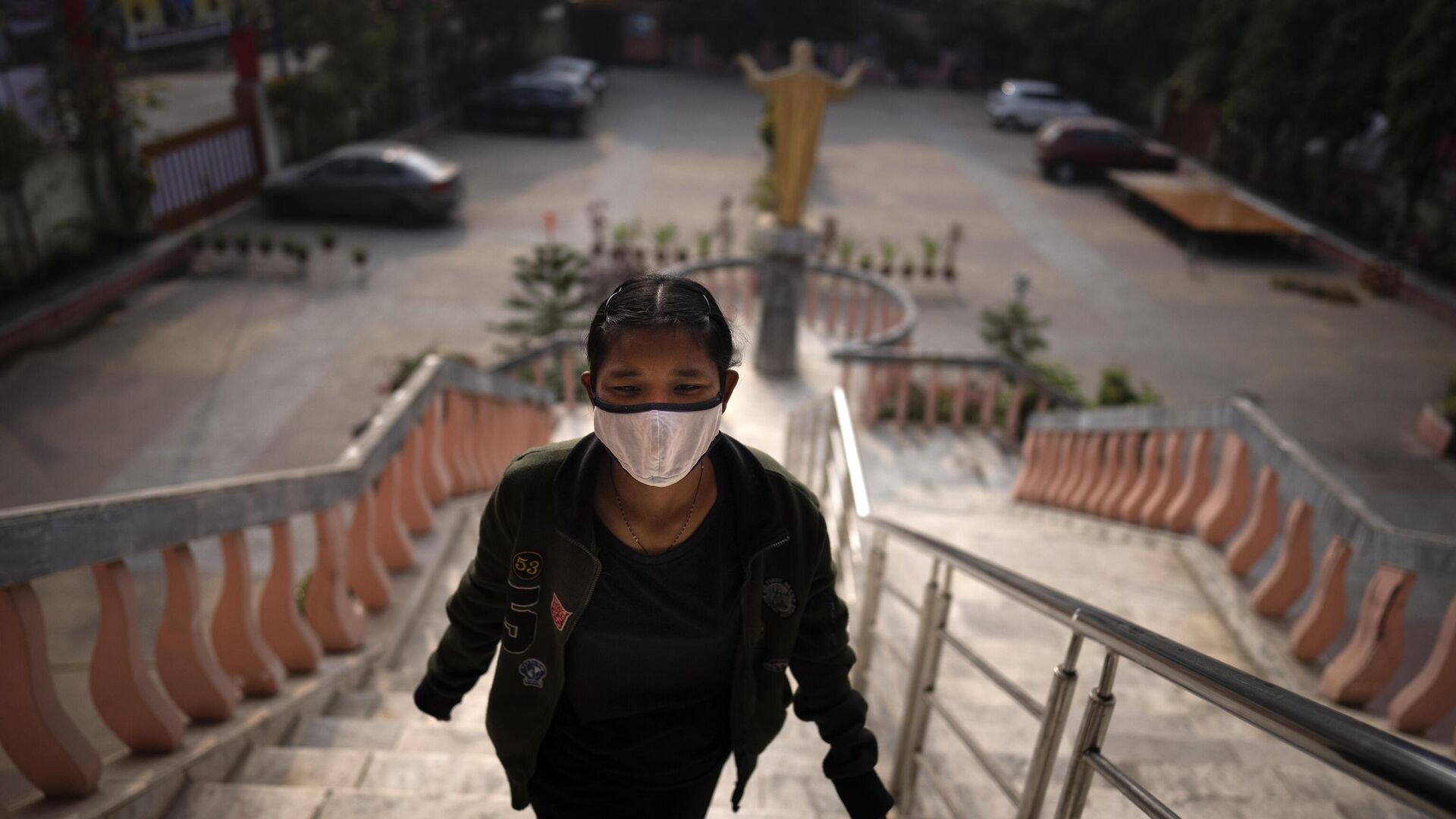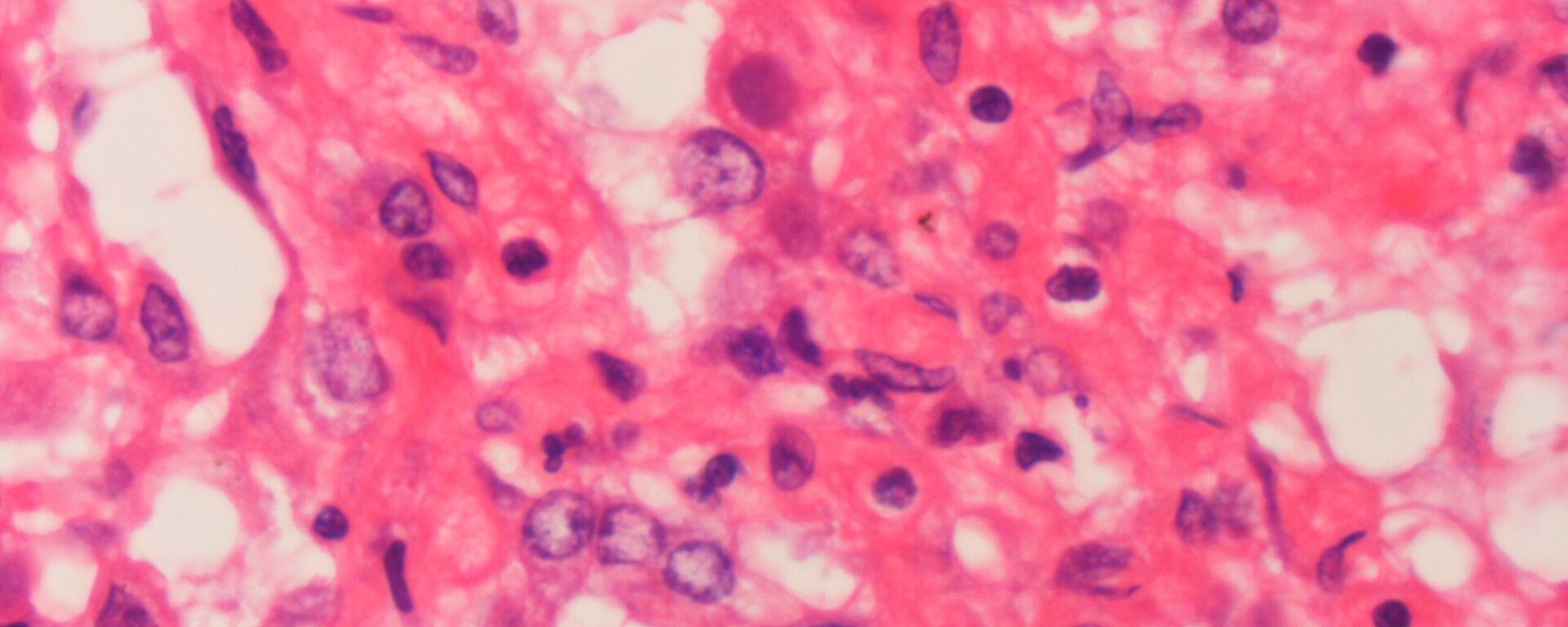Indian Doctors Tackle Rising Influenza and Covid Infections

© AP Photo / Anupam Nath
Subscribe
India is facing a double whammy due to a sudden spike in Influenza A cases, also known as H3N2 or the Hong Kong Flu, amid a rise in COVID-19 virus and common viral flu.
Scores of people across India have tested positive for Influenza A, also known as the H3N2 virus, which has taken the lives of at least 10 people, especially the eldery.
Along with the surge in COVID-19 cases once again in the country, India's federal health authorities have sounded alarm bells and cautioned people to go back to following COVID-appropriate behavior.
According to the Health Ministry, India, on Wednesday, recorded 1,134 fresh infections, with the active cases rising to 7,026.
What's Behind India's Surging Respiratory Illness?
Dr. G.C. Khilnani, Chairman, PSRI Institute of Pulmonary, Critical Care and Sleep Medicine, tells Sputnik that like COVID, the influenza virus is also a droplet infection that is spreading really fast by touching hands, the surface of the table or other things.
The influenza A H3N2 virus, which caused the 1968 pandemic and killed over a million people in Hong Kong, has reportedly seen a 69-percent rise in India this month.
The Indian Council of Medical Research (ICMR) said in a media statement that Influenza A or H3N2 is the major cause of India's rising respiratory illness.
“At least 92% of the hospitalized SARI (severe acute respiratory infections) patients detected with the virus were showing up with fever and up to 86% have a cough. Additionally, 27% progressed to breathlessness and 16% showed wheezing symptoms. Also, 16% had signs of pneumonia and 6% presented with seizures,” the ICMR said.
Dr. Khilnani talks to Sputnik about the sudden spike in influenza A infections and the COVID-19 virus creating a difficult situation for doctors to diagnose the disease as early as possible and give the right treatment.
Sputnik: What has been your overview on the current situation of the rise of Influenza A in India amid the comeback of COVID?
Dr. Khilnani: Historically, the flu occurs almost every year, starting from the Spanish flu in which 50 to 100 million people died way back in 1918-19.
And then there were other sporadic flus such as bird flu, swine flu, and others which had a high mortality rate.
Then came the COVID-19 pandemic which was also life-threatening.
But characteristically, influenza is considered to be a mild illness that is self-limiting (diseases that resolve spontaneously, with or without specific treatment).
So, what we have seen during the last couple of months in India, and specifically in Delhi, is that there is a phenomenal increase in flu-like symptoms. People complain about cough, fever, sore throat, runny nose, and body aches.
We also thought that COVID had almost vanished from India, but it’s back now.
When we tested patients, 90% of the samples were influenza A or H3N2. There has been a phenomenal increase in flu cases and the majority of them are H3N2 virus.
Sputnik: Amid the sudden spike in the COVID-19 and H3N2 viruses, along with common viral flu-like symptoms, has that made it difficult for doctors to make the correct diagnosis?
Dr. Khilnani: Yes, it has become a very difficult situation for physicians.
Influenza symptoms are similar for COVID as well as other viral infections and sometimes with bacterial infections too. You get a high fever, sore throat, runny nose, nasal stuffiness, difficulty in swallowing, and cough.
We are entering into a phase in India with COVID coming back, no doctor, physician, no pundit can diagnose clinically whether it's influenza or COVID. Both have different outcomes and different severity.
Sputnik: What has been your approach to the diagnosis?
Dr. Khilnani: Unfortunately, in India, we do not have widely available facilities for diagnosing every case.
Hence, we were treating patients empirically. I think it is important to know the epidemiology and situation in your own city to get a sense of what it could be.
Moreover, COVID testing is available widely. Cases of flu-like symptoms are tested for COVID first since testing for influenza is more expensive and not so widely available. In the COVID-negative case, we sort of presumed that it must be flu and give treatment accordingly.
Sputnik: Do you think the government should do something to enhance testing and diagnosis measures?
I think the government of India and the health department have been amazing in that context. We saw how COVID testing was enhanced all over the country. It was unimaginable.
Having said that, Influenza flu testing is a whole different ballgame altogether. There are reference laboratories in India like the All India Institute of Medical Science’s virology section and other private labs are testing it all the time, but it is not widely available.
There needs to be more laboratories that have this potential for testing for influenza also. But, since it is an expensive affair, it is not possible for everybody to afford that or go for testing for influenza (flu).
In such a scenario, if the reference laboratories give an early indication that the flu that is going on is H3N2 and not swine flu H1N1, we can treat patients accordingly.
So, there are definite benefits of having widespread testing, but I think in a short period of time, it is not possible to make it available to the masses when I'm sure the government of India would do something to enhance that.
Sputnik: Tell us about the treatment for Influenza A or H3N2 as well as COVID.
Dr. Khilnani: For Influenza treatment, there are anti-viral drug called oseltamivir, popularly known as Tamiflu, which can be given to susceptible people.
While COVID treatment requires steroids, remdesivir, and so on, in common viral flu, we avoid giving steroids because it is very harmful.
Sputnik: So far 10 deaths have been reported due to H3N2 virus. Who all are more prone to it?
Dr. Khilnani: Unlike COVID, the H3N2 virus isn’t causing serious disease in healthy people. However, people who are 75 to 80 years old or children below five years of age are at higher risk.
Those who have diabetes, or have low immune or patients of cancer or rheumatoid diseases, and others might get severe pneumonia and require intensive care and deaths may also occur.
Sputnik: What preventive measures would you suggest?
Dr. Khilnani: I wouldn’t say that people should not go to offices as we advised during COVID times. However, it is important, especially for the elderly, to avoid going to crowded places, or gatherings, and shaking hands with people. Those susceptible should wear a mask.
One should follow COVID-appropriate behavior like washing hands frequently as we did during COVID time, and ensure that they have been vaccinated for the flu. The Influenza and COVID flu vaccines are freely available in the market.
It is a safe vaccine and immunity starts building up 10 to 14 days after getting the injection.
In my personal experience, as a physician, when I ask about a patient's history having flu-like symptoms, the majority of them say that they went to a party last night or a social gathering, traveled by aircraft. Within 24 hours, they were coughing and developed a sore throat and fever. And when you test them, they are flu-virus positive be it COVID or H3N2.
The key is exercising restraint and self-control.


